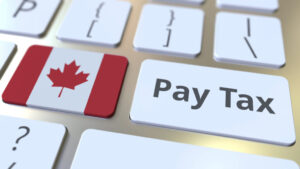Filing your individual tax return by April 30 each year is only half the battle for many Canadians with figuring out how to pay any taxes due on the other end. Due to tax laws constantly changing, you may be among the list of Canadians who were hit with an unexpected tax bill when you filed your return. Understanding your payment options is critical to staying in compliance with the Canadian Revenue Agency and avoiding any fines and penalties.
Option #1: Make a Payment
The first option when it comes to tax owed to the Canadian Revenue Agency is to make a payment in full. In full payments can be made online, in person, or by mail, but need to be remitted timely. Just like the return due date, any amounts owed must be paid in by April 30, making it important to understand your tax burden before the due date. Payments online can be done through an online bank, debit or credit card, pre-authorized debit, or wire transfer. On the other hand, if you choose to pay in person, you can either go to a financial institution or the Canada Post location. Whatever method you choose, you will need to understand the different lead times required, calling on the need to enlist the help of a qualified accountant, like NRK Accounting.
Option #2: Set Up a Payment Plan
Depending on your financial situation, you may not have the funds readily available to pay your entire tax burden. The Government of Canada realizes this is a common situation for many Canadians, which is why they allow payment plans to be set up. The first step in arranging a payment plan is to calculate your monthly income and expenses through a worksheet. This will determine how much you can afford to pay towards your tax bill, including interest, by using the prior information and a calculator. After these two steps are taken, you must call the CRA to set up your payment plan. Like paying in full, you need to have an agreement in place before April 30 to avoid late payment penalties and interest.
Option #3: Contact the CRA
When you are unable to pay in full and a payment plan does not fit your situation, you may need to contact the CRA directly to analyze the next steps to take. The Canada Revenue Agency can walk you through payment deferral, changing or starting a payment plan, and specific ways to pay your liability tailored to your situation. The fines and penalties for not paying your tax bill can be hefty, calling on the need to avoid the consequences of willfully neglecting to pay.



